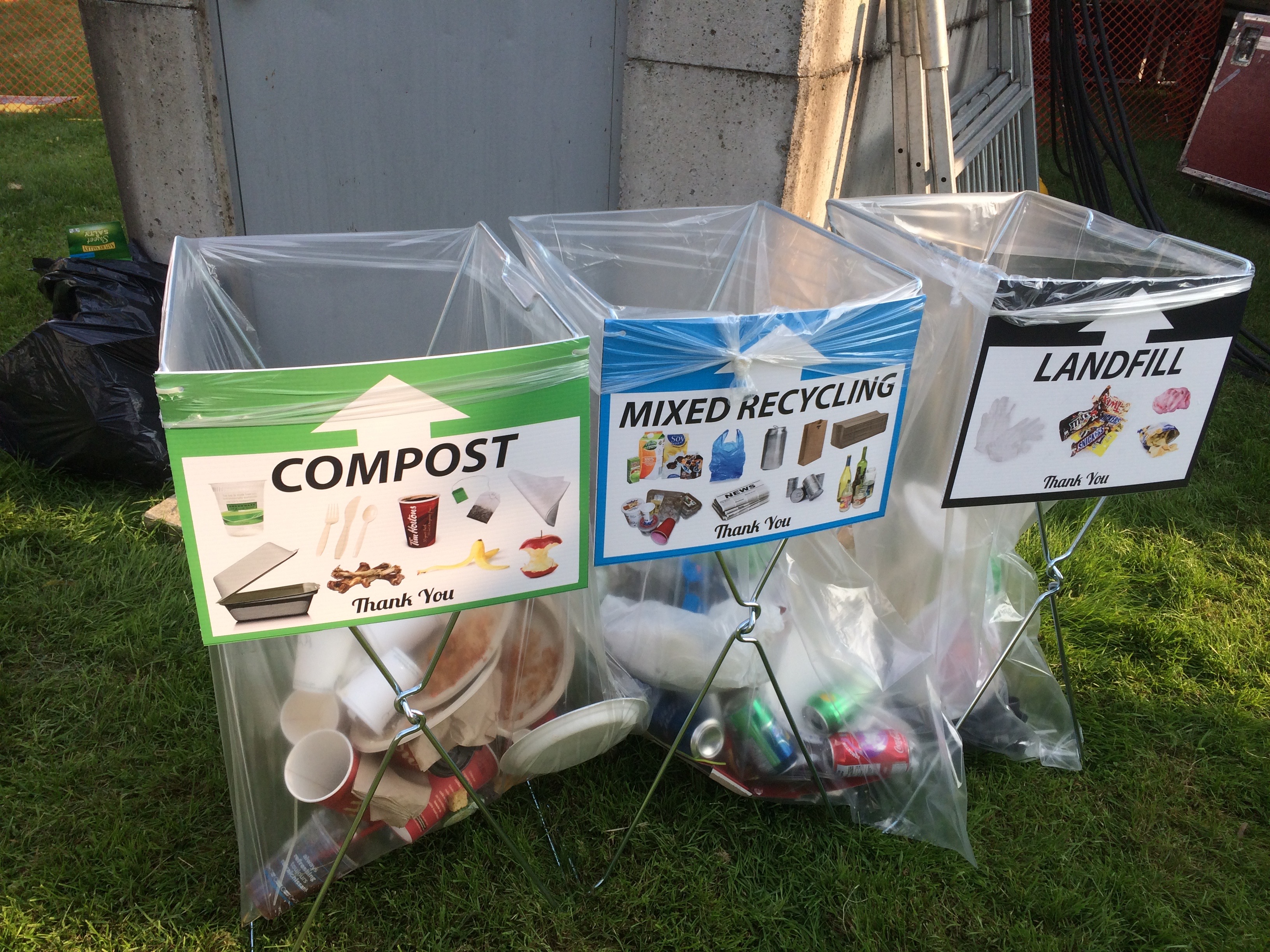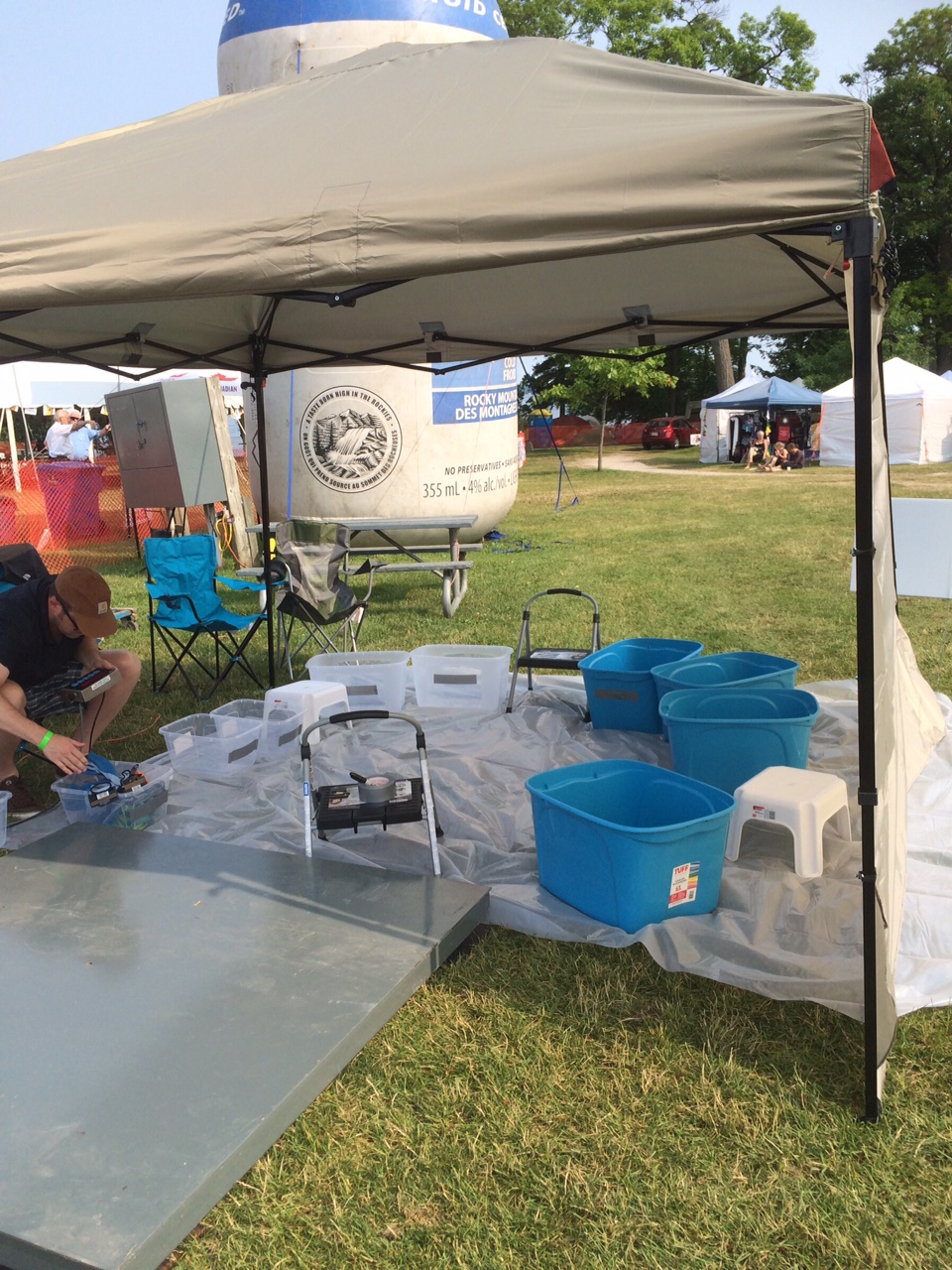




Waste Audit Information:
How and Why To Do A Waste Audit
Why?
The purpose of a waste audit is to conduct a comprehensive analysis of waste produced at a festival. This provides a benchmark for comparison in future years to assess progress, and to help a festival reduce the waste that is created. A waste audit can help to determine:
- How many kilograms of waste is produced by the festival
- What percentage of waste can be diverted from ending up in the landfill by either being recycled or composted
- What contamination is taking place, where, and hopefully why (such as: poor signage in a certain area, improper waste container placement, not enough cooperation from the vendors, etc.)
- What specific strategies should be addressed in order to further reduce waste (such as: provide vendor incentives, improve education of festivalgoers, reduce printed materials, etc.)
Learning this detailed knowledge about waste at a festival allows for a specific comprehensive plan to be created in order to increase the waste diversion rate. A waste audit is instrumental in the development of a waste strategy for a festival.
It can also save costs on haulage as garbage is more expensive than recycling to dispose of.
How?
The method for a waste audit is to use a direct waste analysis that samples and sorts the waste. This involves directly examining wastes by sorting the material into pre-determined categories by hand and then weighing each category. Products can be divided into the following categories, or other pre-determined categories based on the composition of the waste at each festival:
- Metals (beverage cans, vendor packaging, etc.)
- Plastics (plastic bags, drink bottles, packaging, etc.)
- Glass (beverage bottles, other glass)
- Paper (flyers, tickets, etc.)
- Organics (food, napkins, compostable cutlery, etc,)
- Other garbage (diapers, etc.)
The categories of waste are then presented on a mass percent contribution basis, indicating the percentage of the total waste each category represents based on the weight of material. Mass percent contributions of waste categories should be first determined for each container sampled individually, then collectively per container type and finally in total for all wastes sampled at the festival.
It is important to keep track of exactly where the waste samples you are sorting are coming from, and what time you retrieved them. This will allow for conclusions to be drawn about what specifically is causing any issues. For example, if it is determined that contamination is taking place late at night at the exits, in order to improve diversion rates more volunteers are needed to staff the waste stations that people leave through.
Examples
Irie Festival, Toronto A waste audit conducted at the Irie Festival in Toronto in 2011 determined that 94% of all the waste generated had the potential to be diverted from the landfill. However, the festival was not reaching this, and contamination of waste material was identified as the main cause for this. Specific strategies were suggested in order to deal with the exact problem. Without the waste audit, this festival would not know their potential, and would not know how best to address issues.
Mariposa Folk Festival, Orillia A waste audit conducted at Mariposa Folk Festival in 2015 determined that the festival managed to divert 88% of waste from the landfill. While this is a wonderful success, the waste audit also uncovered other key information. For example, the highest percentage of contamination took place in the camping area. Strategies can be created using this knowledge from the waste audit to target the camping areas with more signage, more volunteers, other programming. This will further improve the waste diversion of the festival, but without the waste audit festival managers would not have known to focus efforts on the camping area.
*Contamination of waste material occurs when discarded items are not properly sorted and separated at the source, or point of disposal.
